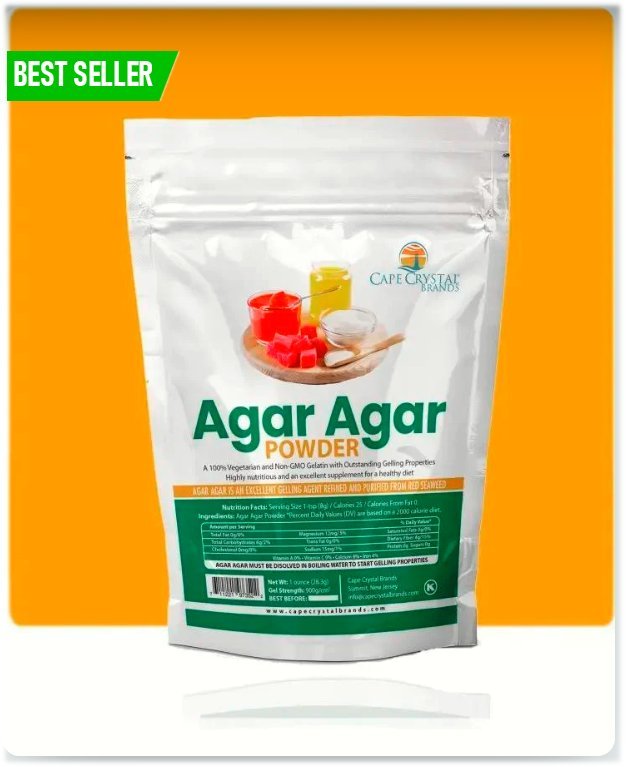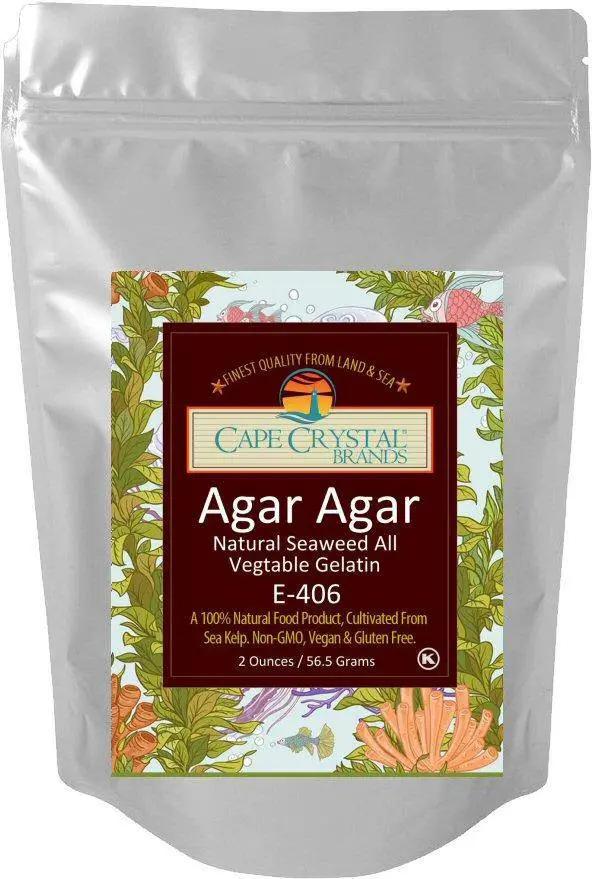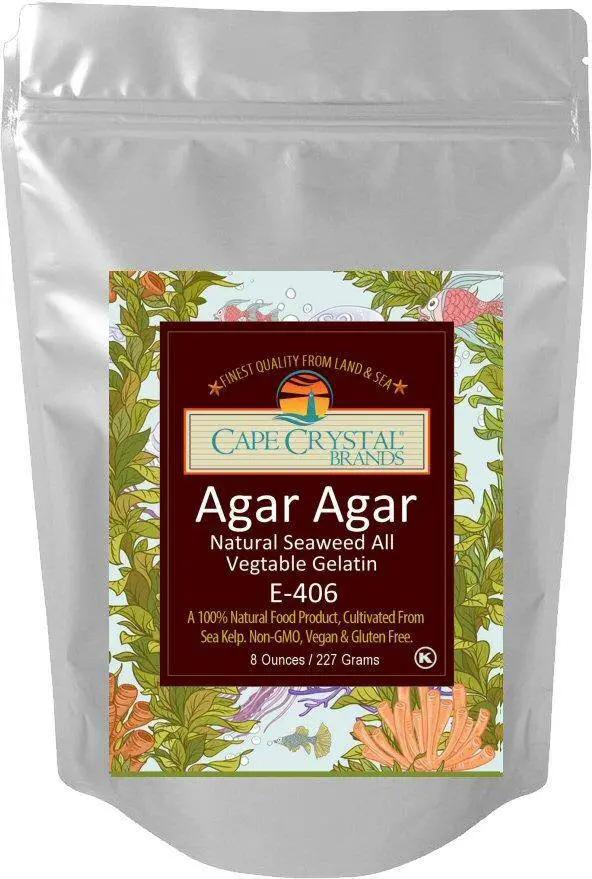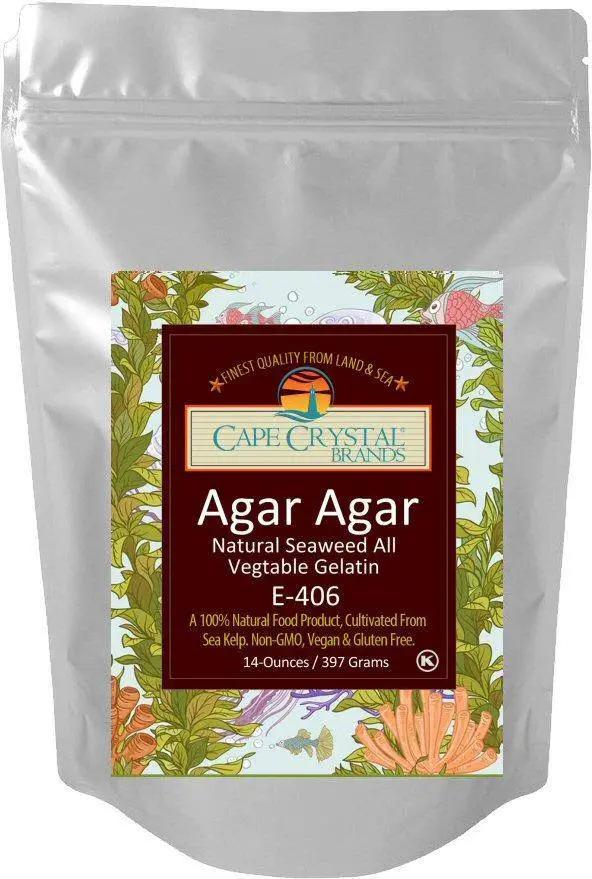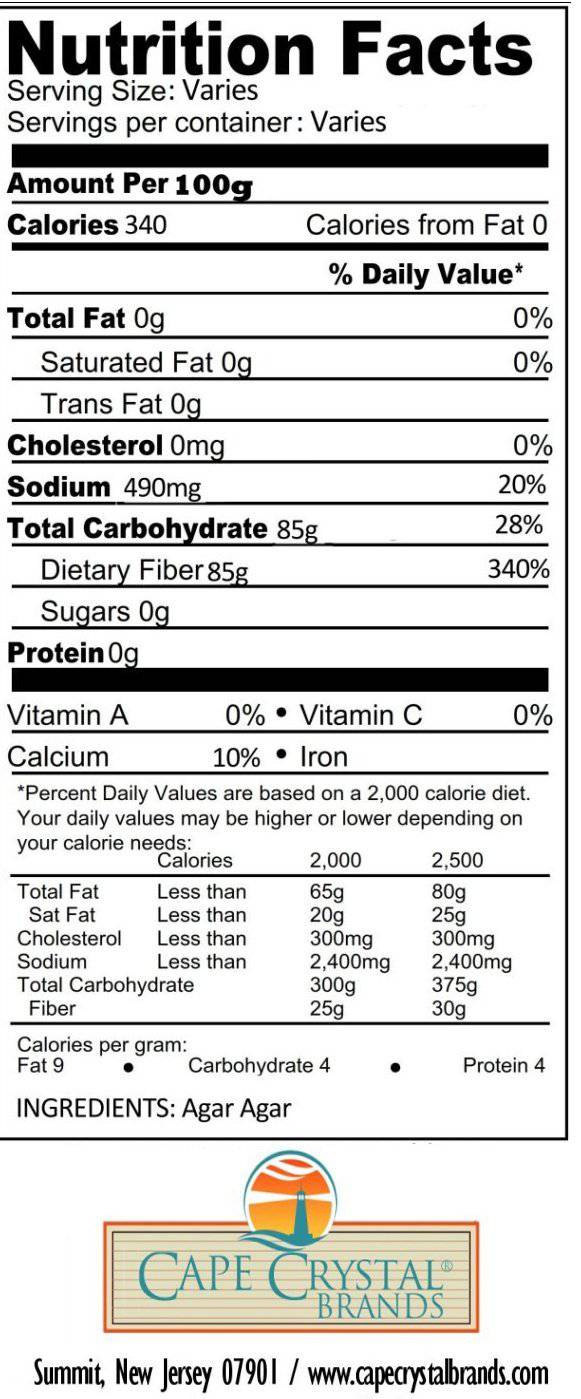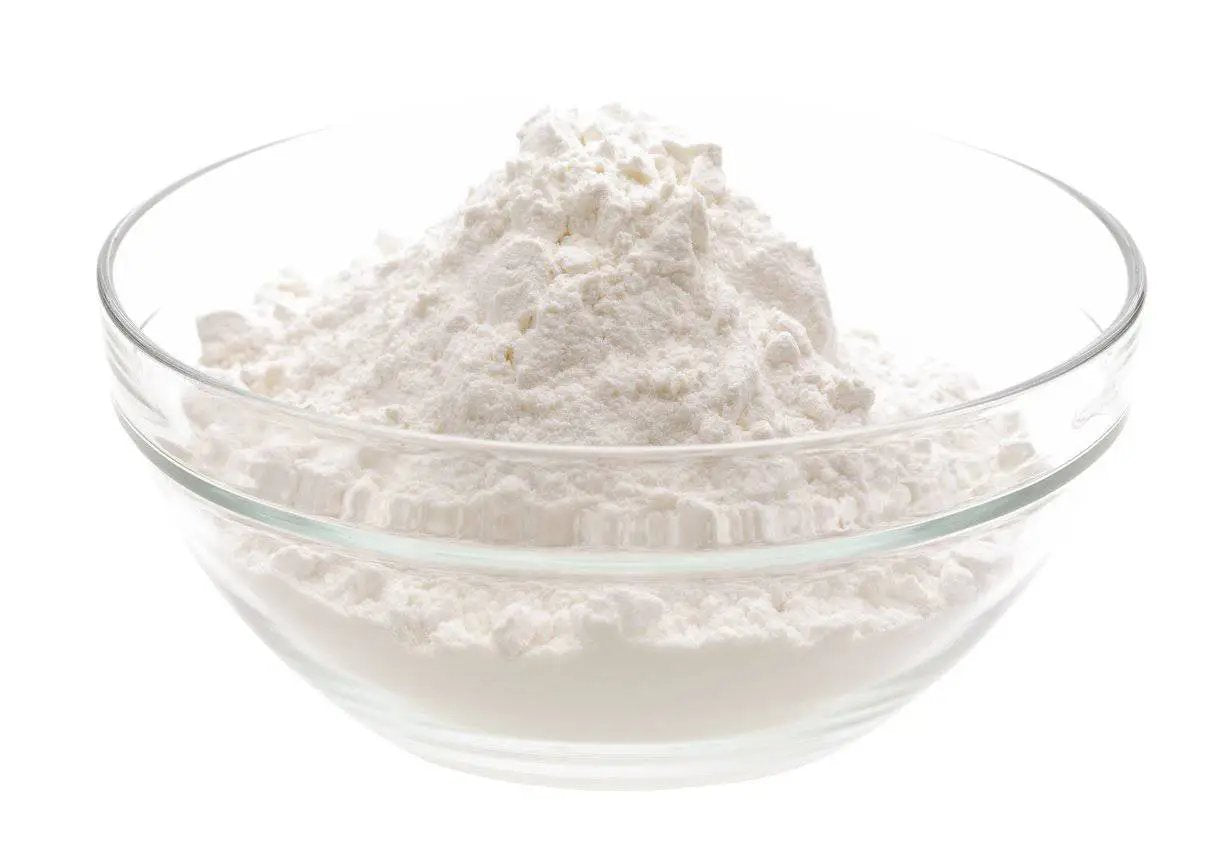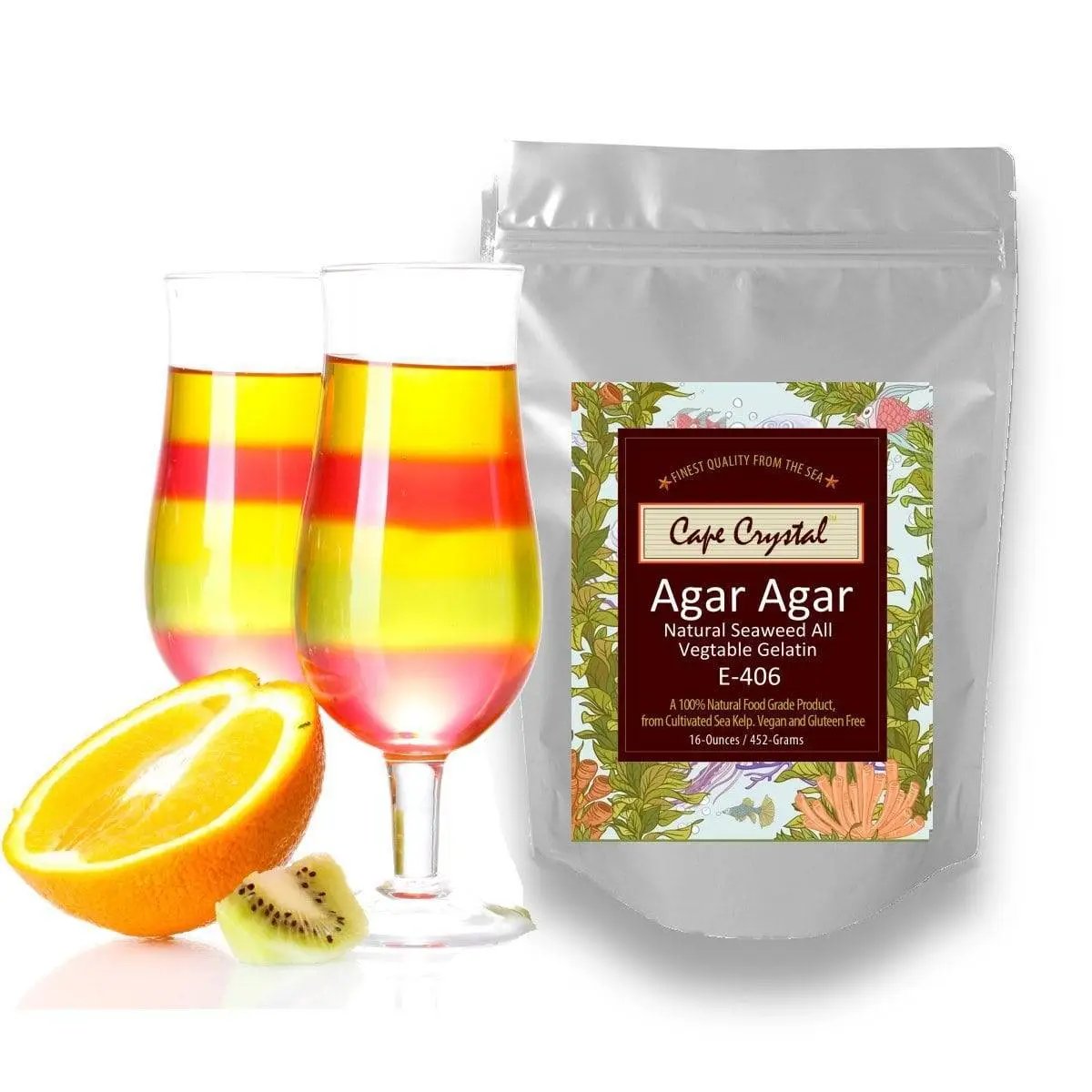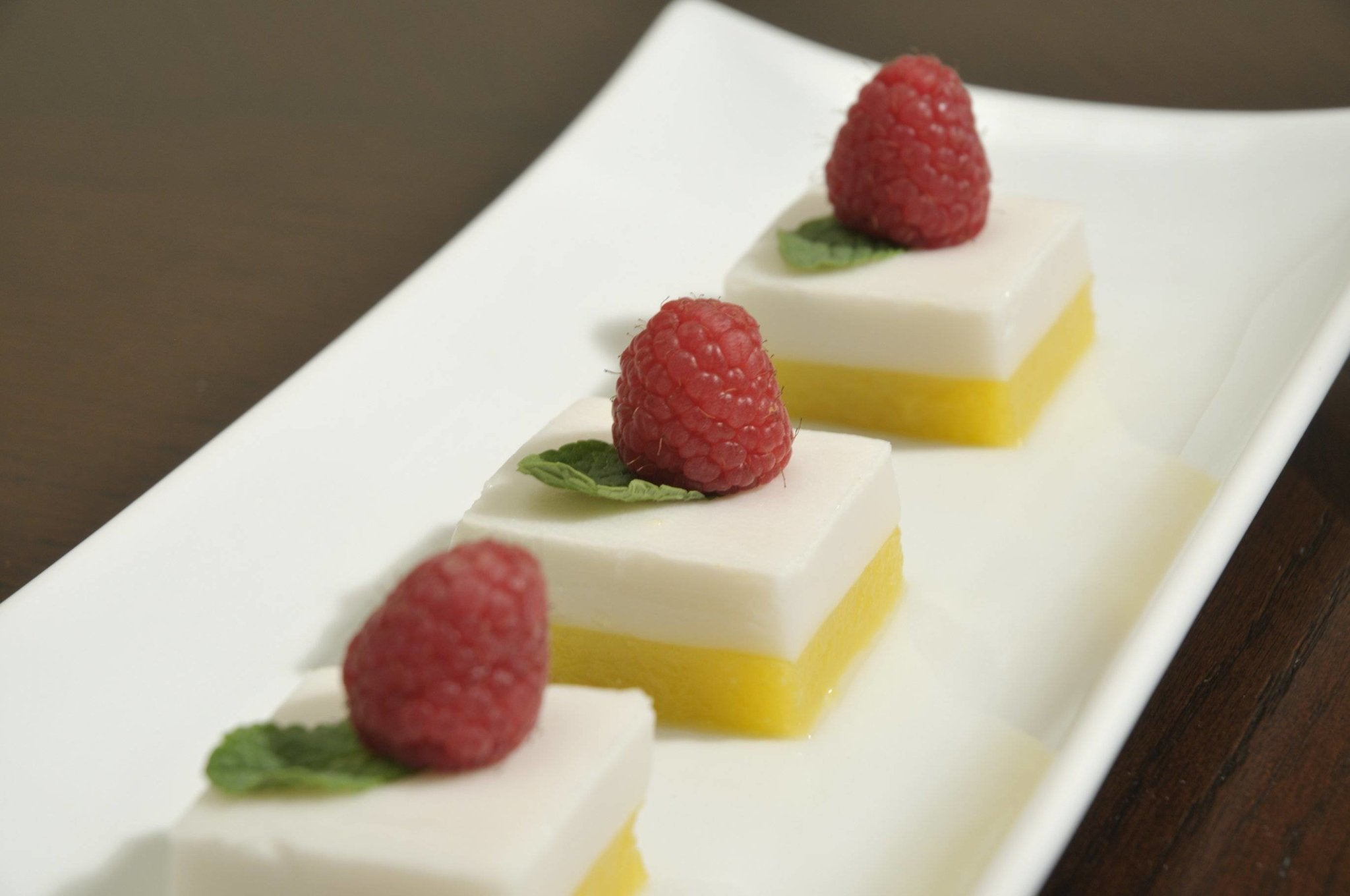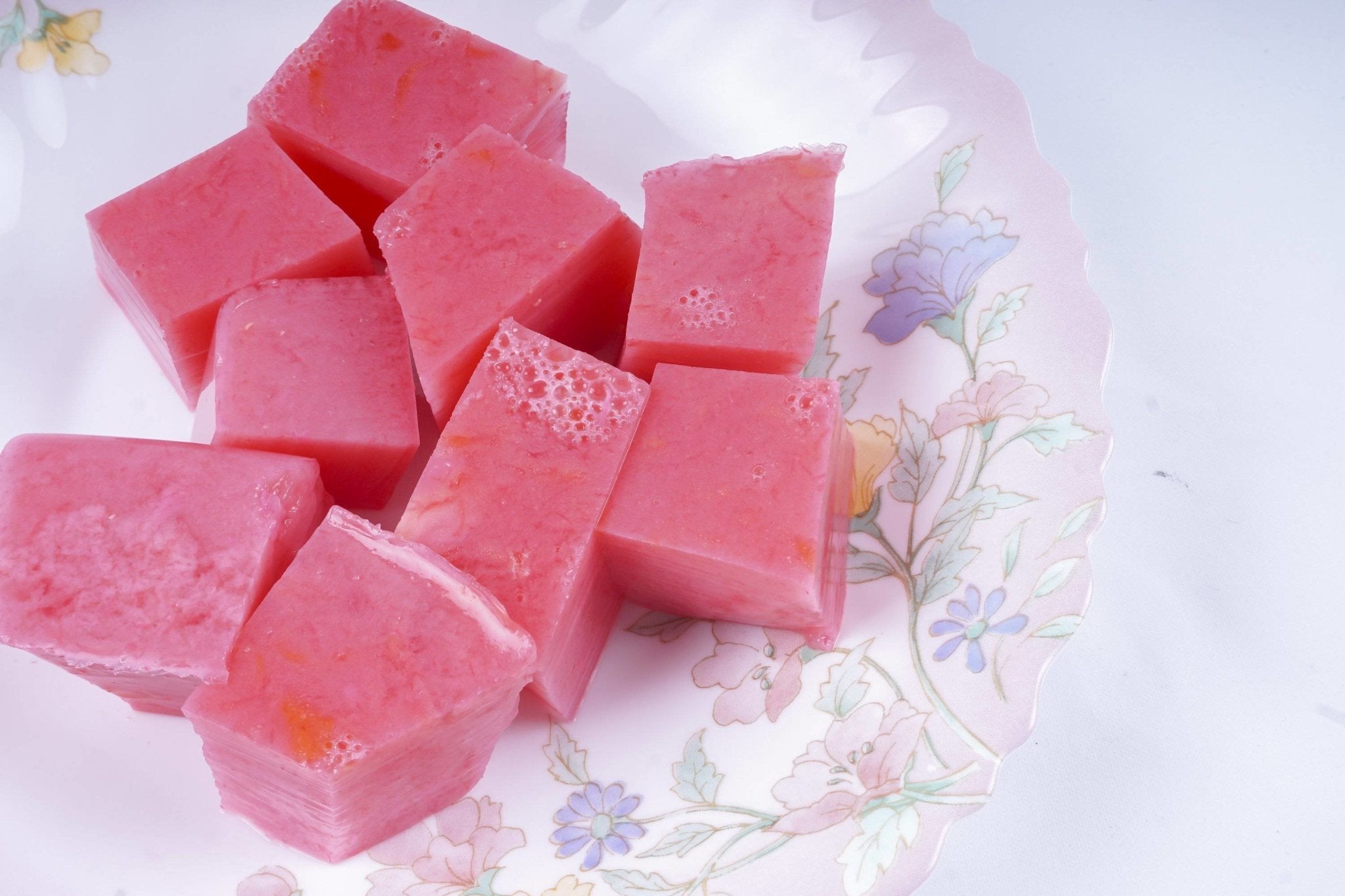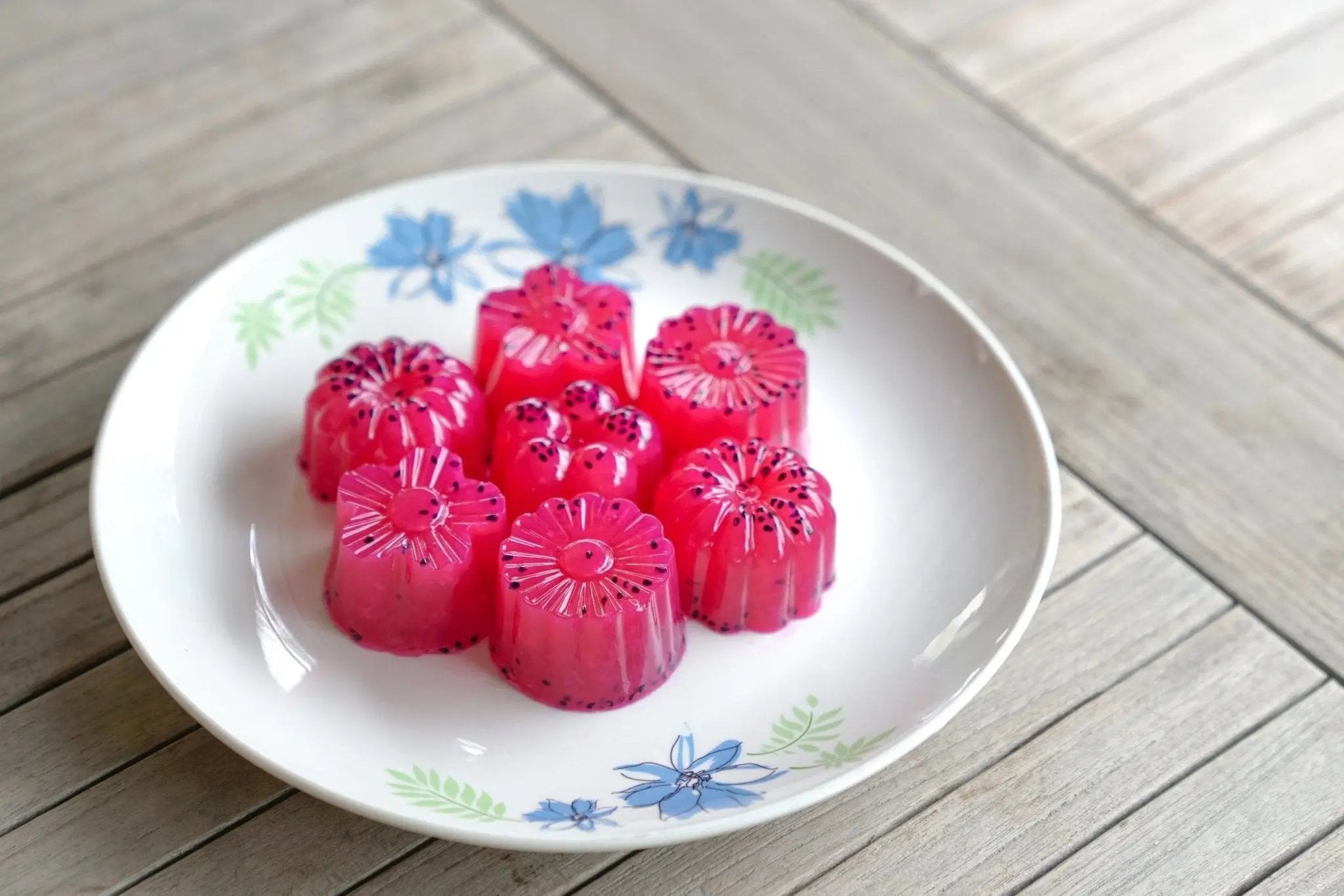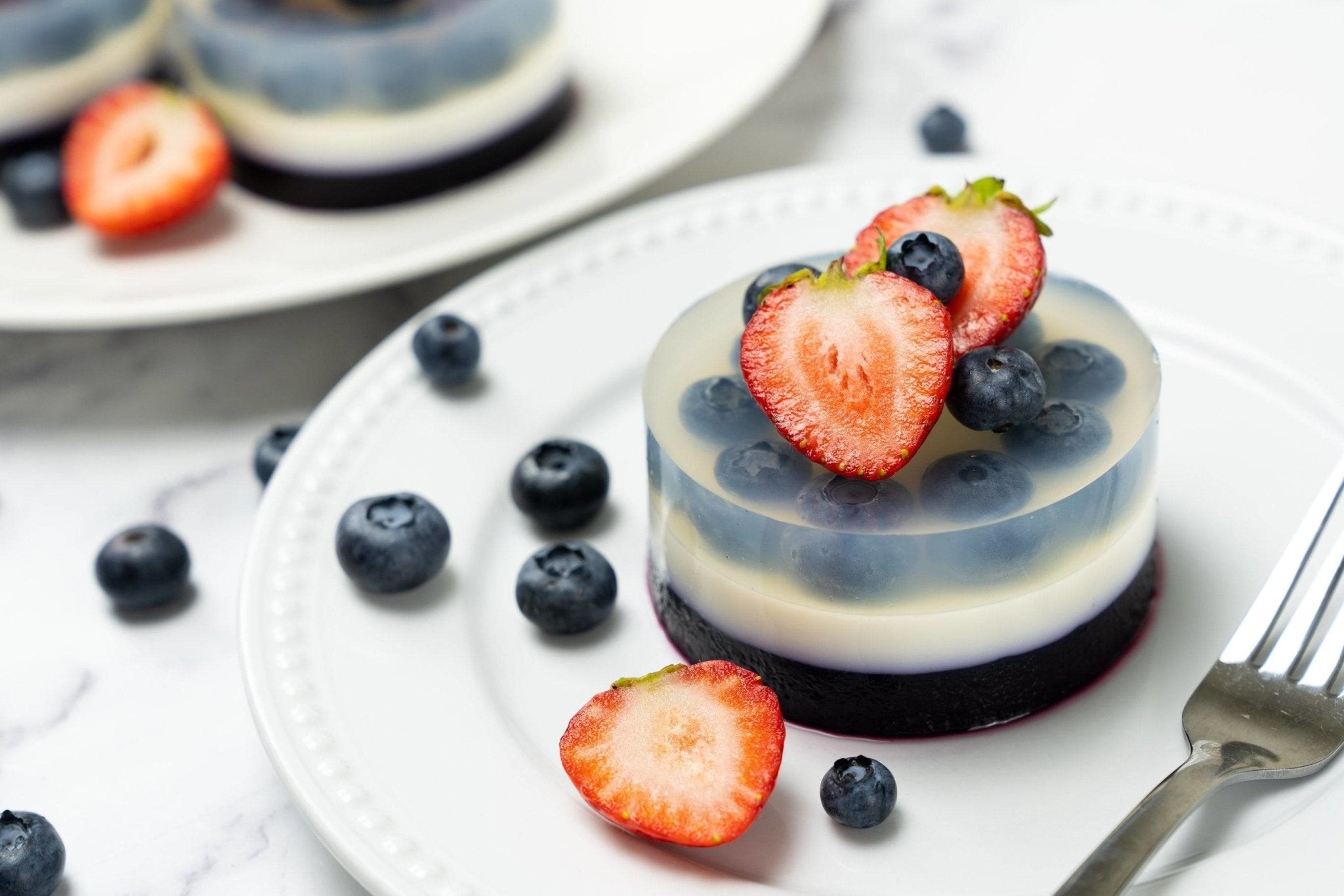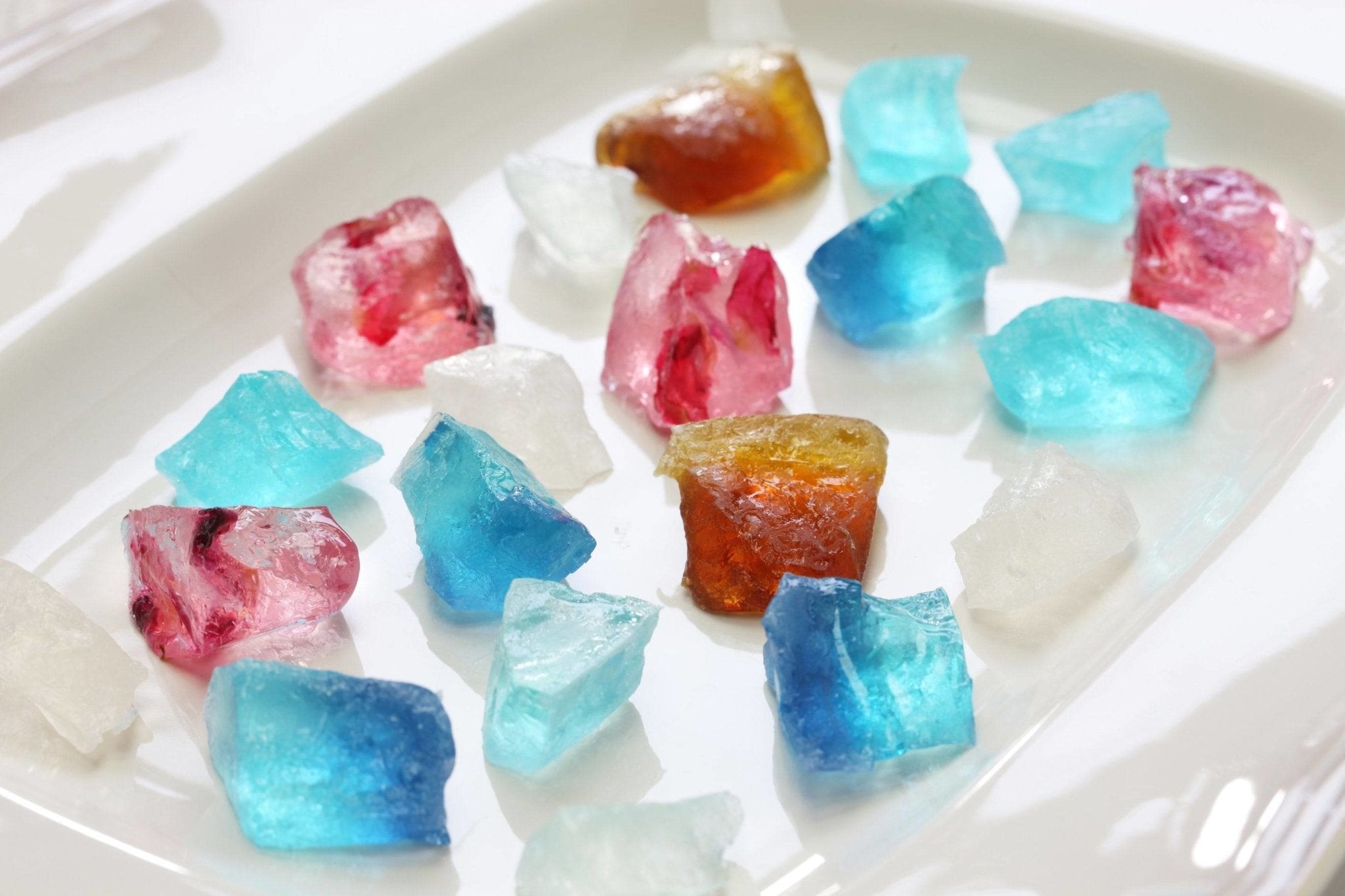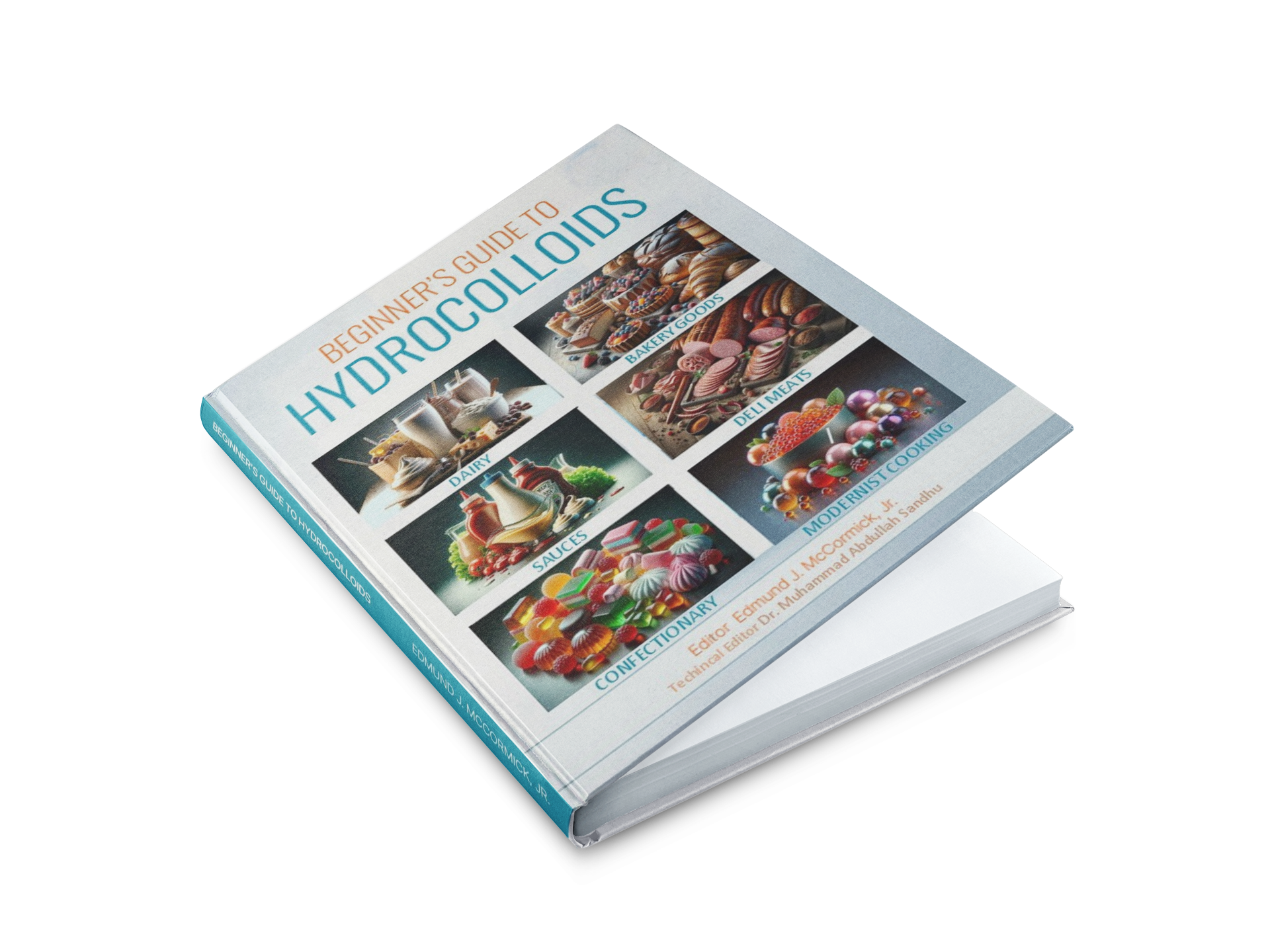
New Book, Beginner's Guide to Hydrocolloids
SUBSCRIBE TO OUR BLOG
Promotions, new products, and recipes.
The "Beginner's Guide to Hydrocolloids" serves as an essential compendium for those intrigued by the multifaceted world of food science, specifically within the realm of hydrocolloids. This guide delves into the historical evolution, fundamental concepts, and practical applications of hydrocolloids in food thickening, emulsification, stabilizing, and jellification. Designed to bridge the gap between scientific theory and culinary practice, the book offers a thorough exploration of how these substances enhance texture, consistency, and stability in food products, contributing to the culinary artistry and food innovation.
Key Takeaways:
- Historical Context: The guide provides insight into the development of hydrocolloid usage over time, illustrating its pivotal role in food preparation from ancient cultures to modern culinary techniques.
- Types and Properties: It categorizes the various types of hydrocolloids, detailing their unique properties, functionalities, and sources, including plant-based, microbial, animal, and synthetic origins.
- Practical Applications: The book highlights practical applications in the culinary and food processing industries, demonstrating how hydrocolloids can be used to achieve desired textures and consistencies in a wide range of products.
- Innovations in Hydrocolloid Research: A section is dedicated to the latest innovations and scientific advancements in hydrocolloid research, emphasizing sustainable sources and novel applications in food technology.
- Future Prospects: It speculates on the future of hydrocolloids in food science, including potential for new discoveries and applications that could revolutionize food design and functionality.
The "Beginner's Guide to Hydrocolloids" is poised to be an invaluable resource for a wide array of individuals interested in the expansive world of food science, ranging from the curious reader to the professional chef and the food processor. Here's how this comprehensive guide will benefit these diverse groups:
For the Curious Reader:
Educational Foundation: Offers a solid grounding in understanding hydrocolloids, their types, properties, and their historical significance, making complex scientific concepts accessible to non-experts.
Awareness of Innovations: By highlighting recent innovations and research in hydrocolloids, it keeps readers informed about the cutting-edge developments that could transform food science and culinary arts.
Nutritional Insights: The discussion on health and nutrition provides valuable information on how hydrocolloids contribute to dietary benefits, aiding readers in making informed dietary choices.
For the Chef:
Culinary Application: With detailed chapters on cooking and baking, chefs can explore new textures and techniques to enhance their culinary creations, encouraging experimentation with hydrocolloids to achieve desired outcomes in recipes.
Creative Inspiration: The guide inspires chefs to push the boundaries of traditional cooking methods, offering insights into culinary innovations that leverage hydrocolloids for creating novel food experiences.
Quality Improvement: It provides practical tips on sourcing, sustainability, and the use of hydrocolloids, helping chefs improve the quality and presentation of their dishes while adhering to ethical and environmental considerations.
For the Food Processor:
Technical Advantages: Detailed discussions on the technological functionality of hydrocolloids offer food processors insights into how these substances can improve product stability, texture, and shelf life.
Regulatory Compliance: The chapters on regulations, standards, and analytical methods serve as a valuable resource for ensuring that products meet safety and quality standards, which is crucial for food processors in navigating the complex regulatory landscape.
Market Trends: Understanding the global market, economic impact, and international trade dynamics equips food processors with the knowledge to make strategic decisions, adapt to market trends, and explore opportunities for innovation and growth.
Chapter Summaries
Chapter 1: Introduction to Hydrocolloids
Summary: This chapter lays the foundation for understanding hydrocolloids, discussing their critical role in food science and technology. It introduces the basic concepts and significance of hydrocolloids, setting the stage for more detailed discussions in subsequent chapters.
Chapter 2: Types of Hydrocolloids
Summary: Explores the diversity of hydrocolloids, including their sources—ranging from plants, animals, to synthetic routes. This section categorizes hydrocolloids into polysaccharides, proteins, and others, highlighting their unique properties and suitability for various applications.
Chapter 3: Properties of Hydrocolloids
Summary: Focuses on the key properties of hydrocolloids such as solubility, viscosity, gelation, and their impact on the functionality of food products. These characteristics determine how hydrocolloids are used to modify texture, stability, and appearance in food and pharmaceuticals.
Chapter 4: Applications of Hydrocolloids
Summary: Discusses the wide range of hydrocolloid applications, from thickening agents in foods to roles in pharmaceuticals, demonstrating their versatility. This chapter showcases the broad utility of hydrocolloids in enhancing product quality and consumer experience.
Chapter 5: Hydrocolloids in Cooking and Baking
Summary: Highlights specific uses of hydrocolloids in culinary settings, including how they influence texture, taste, and presentation. It covers practical tips for chefs and home cooks on incorporating hydrocolloids into recipes for improved food quality.
Chapter 6: Health and Nutrition
Summary: Examines the health aspects of hydrocolloids, including their role as dietary fibers and in weight management. This chapter underscores the nutritional benefits and considerations when incorporating hydrocolloids into diets.
Chapter 7: Sourcing and Sustainability
Summary: Addresses the critical importance of responsibly sourcing hydrocolloids and the sustainability challenges within the industry. It emphasizes ethical practices and environmental considerations in hydrocolloid production and use.
Chapter 8: Innovations and Research
Summary: Focuses on the cutting-edge research and innovative applications of hydrocolloids. This chapter discusses the potential for new discoveries and technological advancements that could shape future trends in the field.
Chapter 9: Hydrocolloids in Vegan and Vegetarian Foods
Summary: Explores the pivotal role of hydrocolloids in developing plant-based food products, highlighting how they help achieve desirable textures and flavors in vegan and vegetarian diets.
Chapter 10: Global Market and Trends
Summary: Provides an overview of the global hydrocolloid market, including current trends, growth opportunities, and challenges. This chapter helps readers understand the economic and strategic aspects of the hydrocolloid industry worldwide.

Chapter 11: DIY and Home Use
Summary: Encourages the practical application of hydrocolloids in home cooking and DIY projects. It offers guidance on how to leverage hydrocolloids for personal use, enhancing everyday meals and creating innovative dishes.
Chapter 12: Comparison and Substitution
Summary: Offers insights into comparing and substituting different types of hydrocolloids to achieve desired outcomes in food texture and stability. This chapter serves as a practical guide for selecting the right hydrocolloid for specific applications.
Chapter 13: Regulations and Standards
Summary: Reviews the regulatory landscape surrounding hydrocolloids, including safety standards and quality control measures. This chapter emphasizes the importance of compliance with regulations to ensure product safety and integrity.
Chapter 14: Research and Innovations in Hydrocolloids
Summary: This chapter delves into recent research and innovations in the field of hydrocolloids, showcasing breakthroughs and potential future developments. It emphasizes the importance of staying abreast of new findings to leverage hydrocolloids' full potential in various applications.
Chapter 15: Technological Functionality
Summary: Discusses how hydrocolloids enhance food processing and preservation through technological functionality. This section highlights the role of hydrocolloids in improving product stability, texture, and shelf life.
Chapter 16: Regulatory Aspects of Dietary Fibers
Summary: Explores the regulatory framework surrounding hydrocolloids when used as dietary fibers. It provides insights into labeling, health claims, and the importance of compliance with food safety standards.
Chapter 17: Agricultural Practices
Summary: Examines sustainable agricultural practices for sourcing hydrocolloid raw materials. Advocates for ethical cultivation and harvesting methods to ensure the sustainable production of hydrocolloids.
Chapter 18: Nanotechnology and Hydrocolloids
Summary: Delves into the intersection of nanotechnology with hydrocolloid science, considering the potential for nanotechnology to revolutionize hydrocolloid applications in food science and other industries.
Chapter 19: Culinary Innovations
Summary: Highlights innovative culinary applications of hydrocolloids, encouraging chefs and food professionals to experiment with hydrocolloids to create new textures and flavors.
Chapter 20: Economic Impact
Summary: Discusses the hydrocolloid industry's significant economic impact, including job creation and contributions to global economic growth. It also touches on the importance of understanding market dynamics.
Chapter 21: Workshops and Training on Hydrocolloids
Summary: Stresses the value of workshops and training programs in expanding knowledge and skills related to hydrocolloids, promoting continued education among professionals in the field.
Chapter 22: Analytical Methods
Summary: Focuses on the analytical methods employed in hydrocolloid research and quality control, emphasizing the role of precise testing in ensuring product quality.
Chapter 23: International Trade and Harmonization
Summary: Explores the global trade dynamics of hydrocolloids and efforts towards regulatory harmonization, highlighting the significance of international standards and cooperation.
Chapter 24: Where Do Hydrocolloids Come From?
Summary: Provides a detailed look at the various natural and synthetic sources of hydrocolloids, underlining the importance of understanding these sources for sustainable production practices.

Available on line:
Barnes and Noble:
Amazon.com
Cape Crystal Brands:
Beginner's Guide to Hydrocolloids - Cape Crystal Brands
Conclusion:
In summary, the "Beginner's Guide to Hydrocolloids" stands as a testament to the multifaceted applications and benefits of hydrocolloids across various sectors of the food industry. By bridging the gap between scientific theory and practical application, the guide not only educates but also empowers individuals and professionals to explore and innovate within the realm of food science and technology, promising to enhance the sensory qualities and nutritional value of food for a diverse range of consumers.
The "Beginner's Guide to Hydrocolloids" is an invaluable resource for anyone looking to deepen their understanding of this crucial aspect of food science. Through its comprehensive coverage of historical backgrounds, types, properties, and cutting-edge applications of hydrocolloids, the guide not only educates but also inspires innovation in culinary practice and the food industry. This book is a testament to the ongoing evolution of food science, encouraging readers to explore the limitless possibilities that hydrocolloids present in enhancing the sensory qualities and nutritional value of food.
Frequently Asked Questions:
What are hydrocolloids?
Hydrocolloids are a class of molecules that form gels or viscous solutions when dispersed in water, used in food processing to modify texture, viscosity, and moisture retention.
How do hydrocolloids improve food texture?
They can thicken, gel, emulsify, and stabilize food products, offering a desirable texture and consistency.
Are hydrocolloids natural?
Hydrocolloids can be derived from natural sources such as plants, animals, and microorganisms, as well as synthesized chemically.
Can hydrocolloids affect food flavor?
While primarily used for texture modification, hydrocolloids can influence flavor perception by affecting the release of flavor compounds in the mouth.
What are some common hydrocolloids used in food?
Agar, carrageenan, xanthan gum, and gelatin are among the many hydrocolloids utilized in culinary applications.
Are hydrocolloids safe to consume?
Yes, when used in compliance with regulatory guidelines, hydrocolloids are considered safe for consumption.
How do hydrocolloids benefit the food industry?
They enhance product stability, improve texture and mouthfeel, extend shelf life, and can contribute to cost-effective production processes.
Can hydrocolloids be used in all types of food?
Hydrocolloids have versatile applications, suitable for use in a wide range of food products, from beverages to baked goods and dairy products.
What is the future of hydrocolloids in food science?
Ongoing research and innovation focus on discovering new sources of hydrocolloids, improving functionality, and exploring sustainable production methods.
How can one start experimenting with hydrocolloids in home cooking?
Begin with simple applications, like using agar to make vegan gelatin desserts or xanthan gum to thicken sauces, following recipes and guidelines for proper usage and proportions.
Well That's the Story. I hope it was helpful. Let's Hear Your Thoughts!
We've shared our insights, and now it's your turn! Have an opinion, a question, or a story to share about this article? Dive into the comments below and join the conversation. Your voice is a crucial part of this community, and we're eager to hear what you have to say.
We would appreciate hearing from you. Please add your comments below. We will reply to them.
See: The Hydrocolloid Glossary
For further reading: Foods You Can Safely Cut Mold Off and Eat
Every dish deserves the perfect texture to complement its flavors. Why settle for anything less than perfection? With Cape Crystal Brands Food Texture products, you don't have to. Whether you're crafting velvety sauces, glistening gels, or fluffy mousses, our range ensures you get the consistency you desire every single time.
Don't just cook—create masterpieces. Dive into the world of culinary textures and elevate every meal. Shop now and experience the magic of Cape Crystal!
🛍️ Click Here to Explore Cape Crystal Brands Food Texture Products!

Chef Edmund
Edmund McCormick is the founder of Cape Crystal Brands and EnvironMolds LLC. He is the author of several non-fiction “How-to” books, past publisher of the ArtMolds Journal Magazine, editor of Beginner's Guide to Hydrocolloids, and author of six eBook recipe books available for download on this site. He resides in Far Hill, NJ and lives and breathes his food blogs as both writer and editor. You can follow him on Twitter and Linkedin.

|
About the Author Ed is the founder of Cape Crystal Brands, editor of the Beginner’s Guide to Hydrocolloids, and a passionate advocate for making food science accessible to all. Discover premium ingredients, expert resources, and free formulation tools at capecrystalbrands.com/tools. — Ed |
- Choosing a selection results in a full page refresh.



















